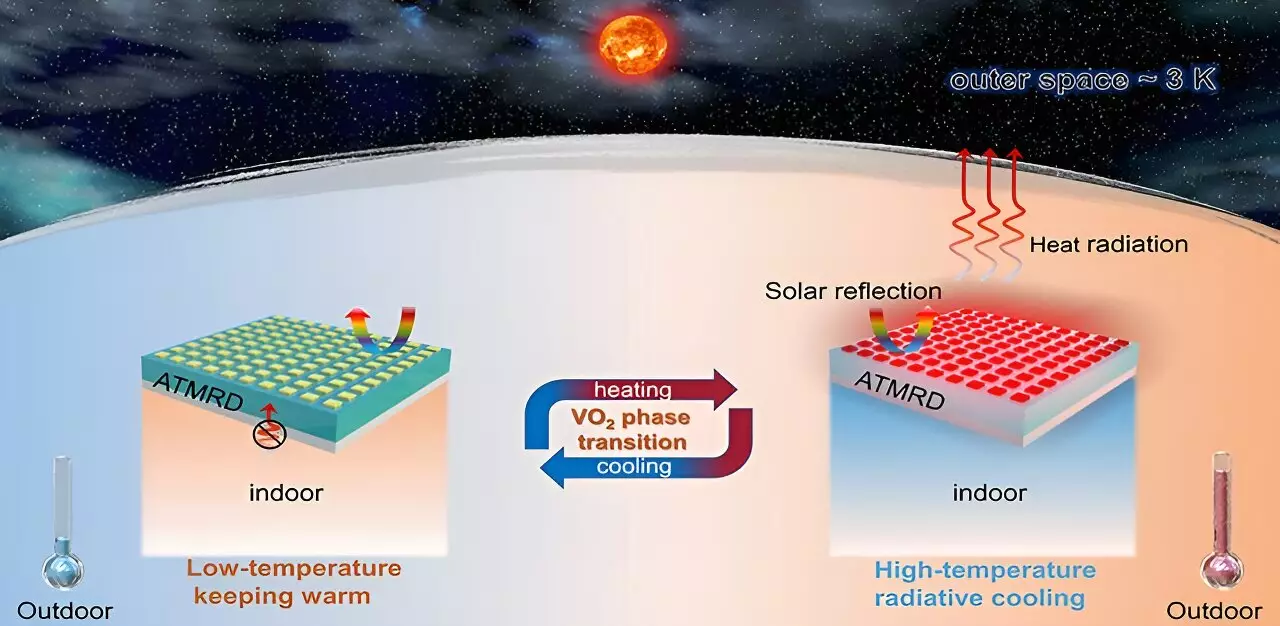As the world faces escalating energy demands amidst the mounting pressures of climate change, the need for innovative and sustainable energy solutions has never been more pressing. The rise in global temperatures and the reduction of fossil fuel supplies exacerbate the urgency to transition towards renewable energy sources. Among the pioneering technologies being researched, passive radiative cooling stands out due to its potential to cool surfaces by simply emitting heat into outer space, without consuming additional energy. This article explores the latest advancements in temperature-adaptive radiative cooling technologies, emphasizing their implications for energy management and sustainability.
Passive radiative cooling utilizes materials designed to reflect solar energy while efficiently emitting thermal radiation. This process enables surfaces to cool naturally, which is particularly useful in urban environments where heat is absorbed and trapped by concrete structures. However, a significant challenge has emerged with traditional radiative cooling materials that possess static emissivity. When ambient temperatures drop, these materials can cause overcooling. This phenomenon inadvertently raises the energy consumption of heating systems, undermining their efficiency during colder periods.
In essence, there’s a need for materials that can dynamically adjust their radiative properties in response to changing environmental conditions. This gap has led researchers to explore thermochromic phase-change materials as viable candidates for dynamic radiative cooling applications, which can modulate their emissivity properties without needing external power sources or mechanical components.
Recent developments at the Beijing Institute of Technology signal a major leap in this field. Researchers have introduced a novel Temperature-Adaptive Metasurface Radiative Cooling Device (ATMRD), which relies on vanadium dioxide (VO2), a material capable of switching its thermal radiation characteristics based on temperature changes. This device integrates advanced geometric designs that utilize a periodic arrangement of VO2 elements, which enhances its effectiveness by optimizing the balance between high thermal emissivity and low solar absorptance.
The results of this innovative design are compelling. The ATMRD demonstrates a significant improvement in performance—solar absorptance has been lowered to 27.71%, showing a decrease of 7.54% compared to prior iterations, while emissivity has been increased to 0.85 at elevated temperatures, marking a remarkable enhancement of 13.3%. Moreover, the device’s ability to adjust its emissivity dynamically shows a 20% increase in effectiveness over previous models, enabling better thermal management and energy efficiency.
The advancements brought forward by Prof. Jingbo Li and his team underline the crucial role of combining advanced materials with clever design strategies in developing cutting-edge thermal management technologies. By addressing the challenge of overcooling, the ATMRD not only optimizes energy consumption but also presents a groundbreaking avenue for sustainable energy solutions. The ability of these materials to respond adaptively to their environment marks a transformative step in how we approach temperature regulation in energy-intensive applications.
The findings of this research provide not only theoretical insights but also practical frameworks for the design of future thermal management devices. Their implications extend into various industries including architecture, automotive, and electronics, potentially leading to widespread energy savings and enhanced sustainability.
As we navigate the complexities of a changing climate and the ongoing energy crisis, technologies like temperature-adaptive radiative cooling represent a beacon of hope. The development of the ATMRD showcases how innovative engineering can effectively address pressing energy concerns by optimizing how we manage thermal energy. The integration of advanced materials and responsive designs holds immense potential for shaping the future of energy management, cultivating a more energy-efficient and sustainable world. Continued research in this domain will be crucial in propelling us towards a greener, more sustainable future.


Leave a Reply